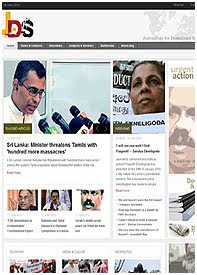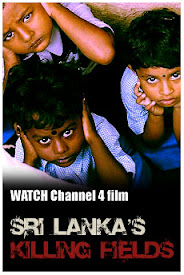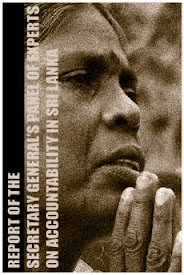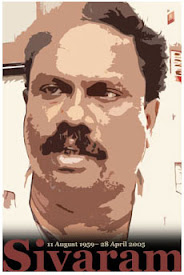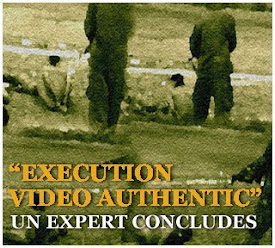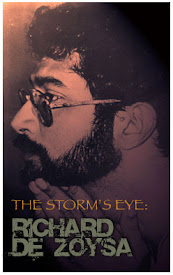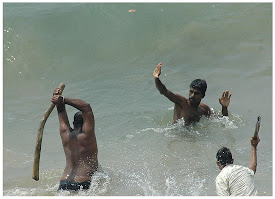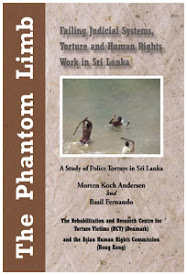
In the afterglow of his thumping re-election last month, Sri Lankan President Mahinda Rajapakse promised to build a strong and unified country that would consign its 37-year civil war to the past.
Instead, his government launched a sweeping crackdown that has seen the man he defeated at the polls, former army chief Sarath Fonseka, taken into military custody, and other opposition figures and senior journalists arrested.
The clampdown disappointed those who had hoped Rajapakse would be magnanimous in victory, with the opposition labelling it a purge against anyone deemed to have supported Fonseka's challenge for the presidency.
Accusations of coup plots and other conspiracies have fuelled a belief among some observers that Rajapakse, despite routing his rival at the ballot box, remains paranoid about dissent and intent on augmenting his already substantial executive powers.
"What I see is a slide into autocratic rule," said the head of the private Centre for Policy Alternatives think-tank, Paikiasothy Saravanamuttu.
"There is a stifling of any kind of opposition and the arrest of Fonseka is the most conspicuous aspect of that," he told AFP.
James Manor, a Sri Lanka analyst at the Institute of Commonwealth Studies in London, said Rajapakse seemed "intoxicated with triumphalism."
"I think it's clear he wants to establish semi-autocratic rule," Manor said.
"He won't dispense with elections or anything, but the way in which he will use his power will be extremely assertive and illiberal, disregarding the opinion of many in Sri Lanka who favour democratic restraint."
Parliamentary elections have been scheduled for April 8 and opposition leaders say the crackdown is politically motivated to prevent them campaigning effectively.
Others see a strong element of personal revenge, driven by Rajapakse, his family and close advisers who saw in Fonseka's campaign rhetoric implicit threats to their security.
Fonseka, 59, had accused his former commander-in-chief of sleeping at national security council meetings, failing to grasp military strategy and profiting from arms purchases -- allegations rejected by Rajapakse.
The president and his family, whose members occupy key government positions, were particularly angered by Fonseka's announcement that he would be willing to testify before any international probe into war crimes allegations linked to last year's victory over Tamil Tiger rebels.
"There is a very genuine fear and insecurity about what could happen with a war crimes inquiry," said Sri Lanka analyst Charu Lata Hogg at London-based think tank Chatham House.
The United Nations says 7,000 civilians died during the final stages of the fighting with the Tigers and the world body has also called on Colombo to account for alleged extrajudicial killings of Tamil prisoners.
The government has denied that any abuses took place.
In November, Fonseka, who holds a US "green card", cut short a visit to the United States to avoid questioning by the authorities there on the war crimes issue.
Fonseka had initially agreed to be questioned, but was pressured to leave by the Sri Lankan government which feared he would be asked to provide evidence against Defence Secretary Gotabhaya Rajapakse, the president's brother.
"People close to the president are driven by anger and hatred," political analyst Victor Ivan said of the post-election clampdown.
"Even if the president wants to let go, those around him want to seek revenge. They want to do to Fonseka what Fonseka promised to do to them," Ivan told AFP.
The backlash has been broad in scope, with newspaper editors seen as siding with the opposition threatened and arrested in what Amnesty International described as a "serious clampdown on freedom of expression."
The government also accused Western countries "with vested interests" -- specifically the United States and Norway -- of financing Fonseka's presidential challenge.
Several Western governments have voiced concern over the crackdown, but Manor said Rajapakse was unlikely to pay any heed, confident in the support of China which has a growing influence on the island and a number of major infrastructure projects.
"He's quite prepared to address Western human rights criticisms with utter contempt," Manor said.
© AFP
Friday, February 26, 2010
Sri Lanka crackdown shreds hopes of reconciliation
Friday, February 26, 2010
No sign of Sri Lankan journalist Prageeth Eknaligoda one month on

ACT NOW! SEND AN APPEAL - Click Here!
One month after the disappearance of her husband Prageeth Ekneligoda, the journalist’s wife, Sandhya Eknaligoda, told CPJ that she has not been able to get police or other government officials to actively investigate the case.
“I have written to the president and have not gotten a response,” Eknaligoda said today. Our children want their father back, and we have not gotten a single word about where he is.”
Prageeth Ekneligoda, a political reporter and cartoonist for Lanka eNews, disappeared on the night of January 24. Several CPJ sources said they fear he was abducted. Ekneligoda was described by colleagues as a political analyst who supported opposition presidential candidate Sarath Fonseka, who was jailed shortly after he lost the January 26 presidential election to incumbent Mahinda Rajapaksa.
Lanka eNews cannot be accessed in Sri Lanka, though the site is available outside the country. Access was blocked around the time of Eknaligoda’s disappearance, two days before voting started.
“The continuing unexplained disappearance of Prageeth Ekneligoda is a chilling reminder of the dangers Sri Lankan journalists face,” said Robert Mahoney, CPJ’s deputy director. “The lack of response by authorities to his wife’s pleas for an investigation are frightening given the impunity with which journalists have been abused in Sri Lanka.”
On January 29, CPJ expressed alarm over reports that Sri Lankan journalists have been subjected to government intimidation, arrests, censorship, and harassment in the aftermath of the January 26 presidential election. The situation has not improved since then, according to many journalists in the country.
Sandhya Eknaligoda said she last saw her husband when he left for work around 7:30 a.m. on the morning of January 24. After he did not return home that evening, she filed a complaint with the local police office at 11:30 a.m. on the next day. She said police refused to accept the complaint, and only began to look into the case two weeks later. A complaint she filed to Sri Lanka’s Human Rights Commission has not resulted in any more information, though the commission launched an investigation on February 12. Her attorneys have filed a case in the Court of Appeal, asking the government to reveal if they are holding him. The case is still being adjudicated.
Eknaligoda said her husband was previously abducted by unidentified individuals in August 2009, but released the next day. He had been handcuffed and blindfolded. The incident was never explained nor prosecuted by police. The couple have two sons, ages 16 and 13.
Sri Lanka ranks 13th on CPJ’s list of journalists killed for their work, and fourth on the CPJ Global Impunity Index. In March 2009, CPJ released Failure to Investigate, a report detailing attacks on journalists in the country and the government’s inability to bring prosecutions in the deaths of journalists.
© Committee to Protect Journalists
Friday, February 26, 2010
The decay of parliamentary democracy in Sri Lanka

By K. Ratnayake - An editorial in last weekend’s Sunday Times entitled, “Give us honourable MPs please,” bemoaned the impotence of the Sri Lankan parliament and the poor quality of parliamentarians. The editorial was one of a number of opinion pieces and comments calling for an improvement in political standards as the country prepares for parliamentary elections on April 8.
The media clearly recognises that broad layers of voters are alienated from and even hostile to all the major political parties and institutions of government. The purpose of such articles is to deflect these sentiments from any closer examination of the underlying causes, which lie in the decay and crisis of the profit system itself.
The editorial began by noting that it was “hard to see” what the last parliament had “to show by way of progressive legislation”. It pointed out that most legislation consisted of minor amendments and that most parliamentarians spent “their time sitting in committees whose recommendations were largely ignored by the executive; extending the emergency regulations; and bickering with one another”. In other words, parliament has become an impotent rubber stamp for the government.
The Sunday Times offered the simplistic explanation: “The foremost reason for this drop in the quality of parliament has been the drop in the calibre of persons entering it.” After citing figures for the falling number of lawyers, businessmen, teachers and public servants in parliament and the rise of the professional politician, it made a half-hearted appeal to party leaders to select better candidates. In the final analysis, the editorial blamed voters for looking for favours, rather than choosing intelligent and dignified representatives.
In reality, the degeneration of bourgeois democracy is completely bound up with the incapacity of the ruling elites to in any way address the democratic aspirations and social needs of working people—that is, the vast majority of voters. President Mahinda Rajapakse, who narrowly won power in 2005, brought nothing but a renewed war against the Liberation Tigers of Tamil Eelam (LTTE) and economic hardship. After defeating the LTTE last May, he promised peace and prosperity, but living standards have further deteriorated.
Rajapakse has relied on increasingly autocratic methods of rule. He operates through a cabal of relatives, close aides, top bureaucrats and generals and rests on an unstable parliamentary majority that has been maintained by appointing all government MPs to some ministerial post. As a result, the president largely ignores his unwieldy cabinet, as well as parliament.
Rajapakse faces virtually no opposition in parliament because the main opposition parties—the United National Party and the Janatha Vimukthi Peramuna (JVP)—agree with his agenda of communalism, militarism and pro-market restructuring. Rajapakse won a second term of office at the January 26 presidential election precisely because voters saw no real difference between him and opposition candidate—General Sarath Fonseka, who had ruthlessly prosecuted Rajapakse’s war.
The Sunday Times tut-tuts over declining parliamentary standards, but has nothing to say about the government’s use of anti-democratic methods and thuggery to suppress opposition. Since the presidential election, Rajapakse has launched a vicious crackdown on opposition parties, media critics and opposition union officials, the high point of which has been the arrest of Fonseka on unsubstantiated allegations that he was planning a coup. It is in this political climate of fear and intimidation that the parliamentary elections are being held.
The government’s stated objective is to obtain a two-thirds majority in parliament, enabling it to change the constitution. The president already has sweeping executive powers to appoint and fire ministers and indeed the government as a whole. Under the state of emergency that the parliament has routinely renewed, the president has extensive additional powers, including to censor the media and ban industrial action. If the government is seeking to change the constitution, it will be to further entrench Rajapakse in office and legitimise his anti-democratic methods.
In the final analysis, Rajapakse’s police state-measures are not directed against the opposition parties, but against the working class. The government is heavily in debt, was forced to borrow from the International Monetary Fund (IMF) and, as soon as the election is over, will be compelled to make deep inroads into the social position of working people—along the lines of what is currently taking place in Greece. Despite sharp tactical differences, particularly over the orientation of foreign policy, the opposition parties have no fundamental disagreement with Rajapakse over his economic agenda or his anti-democratic methods.
The Sunday Times hankers for a mythical past when “gentlemen politicians” ruled the roost in the Sri Lankan parliament. From the outset, these “gentlemen”—representatives of the island’s venal ruling elites—acted with complete contempt for democratic rights and used communal politics to divide working people. One of the first acts of the parliament in 1948 was to abolish citizenship rights for a million Tamil-speaking plantation workers—about 10 percent of the population.
Only the Trotskyist movement—the Bolshevik Leninist Party of India, which later unified with the Lanka Sama Samaja Party (LSSP)—opposed this sweeping anti-democratic measure. Its MPs would certainly not have been described as “gentlemen” by the bourgeois press of the day. They were revolutionary Marxists who used parliament as a means of educating and independently mobilising workers to fight for their rights and class interests on the basis of a socialist program.
The degeneration of the LSSP was expressed most sharply in its adaptation to parliamentary politics and the parties of the capitalist class, which culminated in its entry into a bourgeois coalition government led by the Sri Lanka Freedom Party (SLFP) in 1964. The LSSP’s betrayal was a savage political blow against the working class, and a turning point in bourgeois politics. The lack of principled, working class opposition allowed communalism and opportunism to flourish not only in the existing bourgeois parties, but in petty bourgeois radical outfits such as the LTTE and the JVP. Ultimately that led to the eruption of civil war in 1983.
The start of the war was bound up with a turn to pro-market restructuring by the then United National Party government—part of the broader process of the globalisation of production. The conflict was not primarily an anti-Tamil war, but was directed at dividing and suppressing any opposition from the working class. The war has been associated with the continued erosion of the democratic rights and living standards of working people. That in turn has given rise to growing hostility to the entire political establishment which is reflected in an increasingly fragmented collection of parties that use the most unscrupulous methods to win votes.
The solution proposed by the Sunday Times—the return of the gentleman politician—is simply ludicrous. So extreme are the class tensions in Sri Lanka that what is emerging is a police-state regime that will not hesitate to ruthlessly defend the interests of the island’s wealthy corporate elite to impose the agenda demanded by the IMF and international capital.
The working class needs to draw the necessary historical lessons. Its interests cannot be defended through the politics of parliamentary combination and manoeuvre, but only through its own independent mobilisation on the basis of a socialist program that seeks to restructure society as a whole to meet its social needs, not the profits of a wealthy few.
The Socialist Equality Party (SEP) is standing in the April 8 election to educate and warn working people about Rajapakse’s impending “economic war” and to revive the methods of class struggle that have been suppressed for decades. The SEP will use the campaign to encourage the formation of action committees in workplaces, working class suburbs and in towns and villages to defend the rights of working people. Our candidates oppose all forms of nationalism and communalism and fight for the unity of workers—Tamil, Sinhala and Muslim—as the basis for the struggle for a workers’ and farmers’ government and socialism in Sri Lanka, South Asia and internationally.
© World Socialist Web Site
Friday, February 26, 2010
Sri Lanka: Troops remanded over rape

Six soldiers, produced before court for allegedly molesting a minor in Batticaloa last week have been remanded after an identification parade was held before the Batticaloa Magistrate Courts, Army Spokesperson Major General Prasad Samarasinghe said.
Military Spokesperson Major General Prasad Samarasingha speaking to Daily Mirror Online said that as advised by local Police in accordance with legal procedures, the Army detachment presented 48 soldiers, including those six who were present at the specific location to Court for identification.
However, the victim was able to identify one soldier during the parade.
When the case was taken up before the Batticaloa Magistrate’s Court, the judge, considering submissions forwarded by the Police remanded all those six suspects until March 3.
A parallel Military Police investigation is also underway on a directive issued by Army Commander Lieutenant General Jagath Jayasuriya, Major General Samarasingha said.
The parents of the victim had lodged a complaint at the Eravur Police three days after their nine year old daughter was allegedly raped by soldiers on February 14.
The police, after lodging the complaint had referred the victim to the Judicial Medical Officer (JMO) whose report is yet to be released to Court.
© Daily Mirror
Friday, February 26, 2010
India and China Butt Heads in South Asia
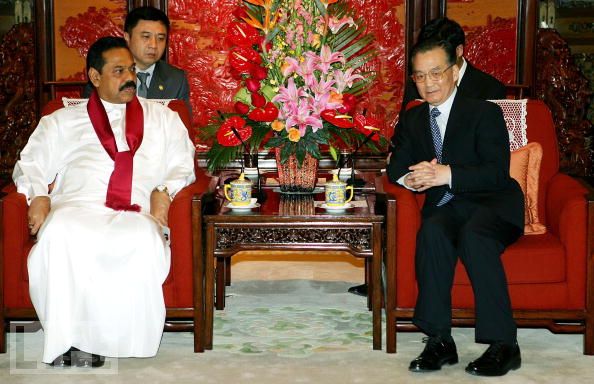
David Caploe - It’s a truism that the 21st century future of not just Asia, but the entire world, will be significantly determined by the relationship between the globe’s two fastest-growing large economies, China and India.
As most observers know, there have long been kinks in the political military relationship between the two countries, most notably their direct armed confrontation in 1962.
This was generally seen as a military victory for China, and provoked a thoroughgoing rejection of the generally pacifist policy of India’s founding Prime Minister, Jawaharlal Nehru.
Indeed, this resulted in a significant militarization of India’s foreign policy throughout the 1960s / 70s / & 80s, and was marked by a series of victories over India’s “fraternal” enemy, Pakistan – which had become a strategic ally of BOTH China and the US, in opposition to India’s deep bond with the Soviet Union.
Tensions with both Pakistan and its sponsors, the US and China, escalated in 1974, with India’s inaugural “Smiling Buddha” nuclear test in the Rajasthan desert, and intensified and accelerated in the spring of 1998, when both countries held a series of nuclear tests marking their irrevocable “joint” entry into that deadly “club”.
This history of military confrontation – direct and indirect, hot and then cold, significantly moderated in recent years by agreements to maintain peace along their frontier, and on principles to settle disputes, going so far as the conduct of joint army exercises on both Chinese and Indian soil – forms the backdrop for Sino-Indian economic relations entering the second decade of the 21st century.
In the eyes of some observers, bilateral exchanges at the political, economic, military and cultural level have developed to the extent that China and India can expect the coming decades to be defined by a so-called competitive-cooperative relationship.
Expanding trade ties have given the two sides a huge stake in keeping co-operation alive. In 1992, their trade totaled $338 million. By 2004, it had mushroomed to $13.6 billion, and by the end of this year is expected to reach a whopping $60 billion – more than quadruple the amount from the middle of the decade.
And at the recently concluded, not particularly successful, Copenhagen climate talks, the two countries worked together to thwart what both considered a Western-oriented plan to cut carbon emissions at their expense.
Given this, some have envisioned a nearly indissoluble link between the two emerging superpowers, which do indeed have complementary strengths as they contemplate the dynamics of the 21st century global economy Cooperation between the two economies holds potential for creating what is called ‘Chindia', the largest economic powerhouse in the world.
As a senior Chinese official once put it, "Chinese manufacturing plus Indian services, Chinese hardware plus Indian software, will create an ideal win-win situation for both countries."
This is a vision we strongly endorse and share, seeing the possibility of a structural alliance between the world’s most powerful “sell” economy – China – with the one country in the world that has the potential, if it can overcome its massive IN-equality of income distribution, to become at least a regional Asian, if not global, successor to America, whose power has come as the world’s “buyer of last resort”: India.
In the context of what COULD be, it therefore comes as a disturbing reminder of the gap remaining to contrast this positive vision of the future with the existing realities of the aptly-named “competitive-cooperative” relationship between the two countries.
Interestingly enough, the new area of economic contestation is not along their “mile high” border region – north-east India / south-west China – where their now-decades-ago military confrontation took place, but, rather, in areas that have traditionally been considered firmly in India’s traditional sphere of influence.
Leaving aside Pakistan – with whom India has significant trade relations, despite the constant lurking background possibility of armed conflict – China has been creating a notable economic presence in three countries always thought of as economically and culturally Indo-centric: Sri Lanka / Bangladesh / and Nepal, not to mention the always mysterious Myanmar.
As recently as the 1990s, China’s and India’s trade with the four South Asian nations — Sri Lanka, Bangladesh, Nepal and Pakistan — was roughly equal.
But over the last decade, China has outpaced India in deepening ties.
The most notable is a massive project in the port of Hambantota, Sri Lanka, home of the current Sri Lankan President Mahinda Rajapaksa, who hopes, with China’s help, to vault the town from its current status as SL’s 9th largest metropolitan area to second, behind only Colombo.
And this hope is by no means simply a personal obsession, given the port’s strategic location in an area now quiet, for the first time in decades, as a result of the end of the Sri Lankan civil war.
The plans are certainly impressive:
China is investing millions to turn this fishing hamlet into a booming new port, furthering an ambitious trading strategy in South Asia that is reshaping the region and forcing India to rethink relations with its neighbors.
As trade in the region grows more lucrative, China has been developing port facilities in Pakistan, Bangladesh and Myanmar, and it is planning to build railroad lines in Nepal.
These projects, analysts say, are part of a concerted effort by Chinese leaders and companies to open and expand markets for their goods and services in a part of Asia that has lagged behind the rest of the continent in trade and economic development.
[Indeed,] China has become a partner of choice for big projects here like the Hambantota port.
China’s Export-Import Bank is financing 85 percent of the cost of the $1 billion project, and China Harbour Engineering, which is part of a state-owned company, is building it. Similar arrangements have been struck for an international airport being built nearby …
The government is also building a convention center, a government complex and a cricket stadium.
Sri Lanka needs foreign assistance to make those dreams a reality, because the government’s finances are stretched by a large debt it accumulated in paying for a 25-year civil war that ended in May.
Mr. Rajapaksa has said he offered the Hambantota port project first to India, but officials there turned it down. In an interview, Jaliya Wickramasuriya, Sri Lanka’s ambassador to the United States, said the country looked for investors in America and around the world, but China offered the best terms. “We don’t have favorites,” he said.
But there may be reasons, some potentially unsavory, that led Sri Lanka, like other countries, to look in China’s direction, that make it a “preferred partner”:
Sri Lankan officials have refused to disclose information that would allow analysts to compare China’s proposals with those submitted by other bidders.
The country has also kept private details about other projects that are being financed and built by China, including a power plant, an arts center and a special economic zone …
Harsha de Silva, a prominent economist in Colombo and an adviser to the country’s main opposition party, said the Sri Lankan government appeared to prefer awarding projects to China because it did not impose “conditions for reform, transparency and competitive bidding” that would be part of contracts with countries like India and the United States or organizations like the World Bank.
At the same time, it is impossible to discount the impact of both China’s low-costs – made possible by its huge cash cache gained from its ever-growing trade surpluses with the US and other Western countries – and its fast-growing expertise in large projects like this, gained from experience in the massive transformation of its own infrastructure:
In 10 years, Chinese companies have become the biggest suppliers to ports of cranes used to move shipping containers, displacing South Korean and Japanese companies … “They are running at very high efficiency and at the lowest costs,” [Jerry] Lou [chief China strategist for Morgan Stanley] said. “China is a game-changer, rather than a new player in the world’s construction industry.”
And this potent combination represents a real challenge to India, which has not always handled relations with its immediate neighbors in the most mutually satisfying ways:
Protectionist sentiments have marred India’s relationships with its neighbors. South Asia has a free-trade agreement, but countries that are part of the pact get few benefits, economists say, because India and its neighbors refuse to lower tariffs on many goods and services to protect their own businesses. …
India’s chief trade negotiator, D. K. Mittal, acknowledged that the country’s economic ties with its neighbors were not as strong as they should be and blamed political distrust between the countries.
Again, underscoring our on-going point that politics and economics are ALWAYS connected.
That said, how is India reacting to this evidently successful surge by China in its own backyard – a situation that requires a great deal of thoughtful balance, not least because China is also India’s largest single trading partner ???
On the one hand, these initiatives are irking India, whose government worries that China is expanding its sphere of regional influence by surrounding India with a “string of pearls” that could eventually undermine India’s pre-eminence and potentially rise to an economic and security threat.
“There is a method in the madness in terms of where they are locating their ports and staging points,” Kanwal Sibal, a former Indian foreign secretary who is now a member of the government’s National Security Advisory Board, said of China. “This kind of effort is aimed at counterbalancing and undermining India’s natural influence in these areas.”
At the same time, India has had some success in establishing closer ties with Sri Lanka, with which it has a strong bilateral trade agreement…
India is [also] starting to respond to China’s growing influence by becoming more aggressive in courting trade partners. India recently signed a free-trade deal with the Association of Southeast Asian Nations and South Korea. Officials have even begun talking about signing a trade deal with China to bolster exports.
India’s trade negotiator Mittal … said leaders were now determined to improve economic relations, something he said was highlighted in a recent agreement with Bangladesh.
In that deal, India agreed to sell electricity to Bangladesh, provide it with a $1 billion line of credit for infrastructure projects, and reduce tariffs on imports.
Bangladesh agreed to allow Indian ships to use a port that is being redeveloped by China.
“The political leaders have to rise above and say, ‘I want this to happen,’ ” Mr. Mittal said in an interview. “That’s what the leaders are realizing.”
Well, we’ll see.
But there’s no question that, even more than Pakistan, China presents India with a challenge unprecedented in its existence as an independent nation.
Its reaction will determine in large measure whether Asia repeats the awful bloody history of Europe during the 20th century or – as we sincerely and profoundly hope – shows it is possible for two economic giants, living in close proximity, to find a way to co-operate and complement, rather than destructively compete, with each other.
The only thing at stake is the future of the 21st century.
David Caploe PhD is the Chief Political Economist at EconomyWatch.com, the largest independent economics community on the web.
© Economy Watch
Friday, February 26, 2010
"The third tranche of $2.6 bln Sri Lanka loan will be delayed" says IMF Mission Head

By Shihar Aneez - The International Monetary Fund said on Thursday it is delaying the third tranche of a $2.6 billion loan to Sri Lanka after the government missed its 2009 deficit reduction targets.
IMF officials told a news conference that Sri Lanka's domestic budget borrowing -- consistent with a budget deficit target of 7 percent of gross domestic production -- was exceeded by a substantial amount.
"The third tranche will be delayed and completed when the budget is formulated after the election," said Brian Aitken, the IMF mission head to Sri Lanka.
The third tranche is worth just below $2 billion.
The central bank had earlier acknowledged that the $40 billion economy likely missed last year's budget deficit goal of 7 percent set by the IMF as a condition for the loan.
Analysts and economists believe the budget deficit may have exceeded 8.5 percent, close to the 9 percent recorded in 2008. [ID:nLDE61E18Z]
The $2.6 billion loan was granted to Sri Lanka to avert a balance of payment crisis following the global economic crisis on condition that it get its spending under control.
So far, the IMF has released around $650 million to the government based on the fiscal performance of the Indian Ocean island following the end of its long 25-year civil war last May.
The IMF has set an even tougher target for Sri Lanka's budget deficit this year at 6 percent of GDP.
Central bank chief Ajith Nivard Cabraal told Reuters on Tuesday that it would be challenging to meet that level due to high government spending required for post-war reconstruction.
Sri Lanka's newly re-elected president vowed earlier this month to regain the progress lost in the quarter-century war with Tamil Tigers separatists by boosting the country's economy and unifying its people.
Mahidna Rajapaksa was re-elected by a landslide on Jan 26.
Sri Lanka will hold legislative polls on April 8 and the president has postponed the presentation of the budget until those elections are over.
© Reuters
Friday, February 26, 2010
Global telecom giant Etisalat starts operations in Sri Lanka

By Sunimalee Dias - A UAE-based company with a global presence, Etisalat, launched its operations in the competitive telecom market in Colombo after its acquisition of the Tigo mobile firm, targeting one million customers by the end of the year.
Etisalat acquired a 100% stake in Tigo Sri Lanka, a wholly-owned subsidiary of Nasdaq and OMX listed Millicom International Cellular S.A., for an enterprise value of US$ 207 million.
Providing the latest in mobile technology, Etisalat is expected to bring in HSPA plus with a connectivity speed of 28 mbps, on par with the company's operations worldwide, Etisalat Chief Technical Officer Sanath Pilapitiya told the Daily FT on the sidelines of the media briefing held in Colombo. Sri Lanka currently has a connectivity speed of 11.2 mbps.
Within one year, the company will be rolling out 1,500 2G base stations with 500 3G base stations islandwide, Etisalat Lanka CEO Dumindra Ratnayaka told the media. This is set to take place in all the major towns in the country.
On Friday Etisalat will be launching its coverage in Jaffna during the mini Infotel exhibitions scheduled to take place there, he noted.
Etisalat aims to bring in strength and capabilities to Sri Lanka "not even imagined by the local consumer," Ratnayaka asserted.
Mobile phone penetration in Sri Lanka is only 52% and in March 2009, Tigo Sri Lanka was licensed to offer third generation services in addition to the second generation services historically provided by the company, on which its success was built.
Being the sixth largest company in the Middle East in terms of capitalisation and revenue and having an experience in the telecommunications industry since 1976, it has extended operations into Saudi Arabia, Egypt and West Africa and further into the Asian markets such as India, Pakistan, Afghanistan, Indonesia and now in Sri Lanka, recording over 100 million subscribers across 18 countries.
The range of services offered that mobile users are tipped to enjoy are the benefits of excellent voice and data applications like WAP, GPRS, 3G, MMS, Push To Talk, BlackBerry services and others. Enterprise and individual customers on the fixed line network also benefit from services such as ATM, Frame Relay, VSAT and ISDN.
Tigo's team and workforce will permeate Etisalat Lanka, as it remains unchanged.
With Etisalat's latest acquisition, it hopes to provide the 2.5 million customer base already present under Tigo a difference customer service with proper coverage, Etisalat Group Chief Marketing Officer Essa Al Haddad said at the media briefing.
He noted that they improve and develop on their social responsibility and were "here to stay".
Sri Lanka is set to obtain the technological resources and access to resources and best capabilities of Etisalat, Al Haddad said.
Etisalat would be opting to fight in the market through the provision of better services as opposed to price.
The customer-oriented and consumer-focused mobile firm is set to take on all market segments with new tariff plans, Ratnayaka explained.
Not challenged by the aggressive telecom market in Sri Lanka and its competitors, Etisalat is set to take on the mobile consumers and in the future it will target other market segments as well.
Group deals with mobile firms like Orange, TMobile and Vodafone have allowed Etisalat customers to gain on all of the features while roaming in countries in which it is not present.
© Daily Mirror
This site is best viewed with firefox

Search
Is this evidence of 'war crimes' in Sri Lanka?
Archive
-
▼
2010
(1312)
-
▼
February
(152)
-
▼
Feb 26
(7)
- Global telecom giant Etisalat starts operations in...
- "The third tranche of $2.6 bln Sri Lanka loan will...
- India and China Butt Heads in South Asia
- Sri Lanka: Troops remanded over rape
- The decay of parliamentary democracy in Sri Lanka
- No sign of Sri Lankan journalist Prageeth Eknaligo...
- Sri Lanka crackdown shreds hopes of reconciliation
-
▼
Feb 26
(7)
-
▼
February
(152)
- ► 2011 (687)
Links
- Reporters Sans Frontières
- Media Legal Defence Initiative
- International Press Institute
- International News Safety Institute
- International Media Support
- International Freedom of Expression eXchange
- International Federation of Journalists
- Committee to Protect Journalists
- Asian Human Rights Commission
- Amnesty International
![Reblog this post [with Zemanta]](http://img.zemanta.com/reblog_e.png?x-id=2e3498b2-7ea4-4082-8a16-e5bd7e0e5a5a)
![Reblog this post [with Zemanta]](http://img.zemanta.com/reblog_e.png?x-id=58505665-0282-4562-9866-e163a418520c)
![Reblog this post [with Zemanta]](http://img.zemanta.com/reblog_e.png?x-id=5671a9c0-bdb1-42cc-b035-0fe39f4e1853)
![Reblog this post [with Zemanta]](http://img.zemanta.com/reblog_e.png?x-id=dae8221f-46cb-48bf-9a18-e2442c04454a)
![Reblog this post [with Zemanta]](http://img.zemanta.com/reblog_e.png?x-id=41724cab-5eaf-4d89-bb6f-4274bb7facbd)
![Reblog this post [with Zemanta]](http://img.zemanta.com/reblog_e.png?x-id=ecec3a75-a87c-485b-bb0c-08cd17dbff1a)
![Reblog this post [with Zemanta]](http://img.zemanta.com/reblog_e.png?x-id=fd818dce-663e-40fc-a086-a544dbb8b8ea)
